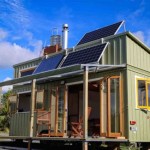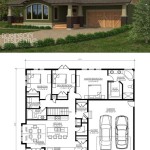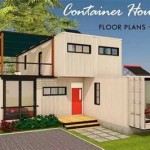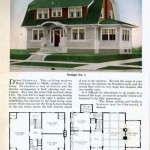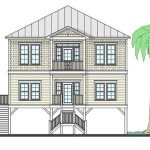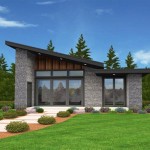Tiny House Layout Plans aid in the design and organization of compact living spaces. They provide blueprints and diagrams that help individuals optimize the limited square footage of tiny homes. For example, a layout plan might map out the placement of sleeping lofts, kitchenettes, and storage areas to ensure efficient use of space.
Creating comprehensive layout plans is essential for creating practical and comfortable tiny houses. They facilitate smart spatial planning and ensure that every inch of the living area is utilized effectively. By providing a visual representation of the space, these plans enable homeowners to make informed decisions about the placement and arrangement of furniture, appliances, and other necessities.
In the following sections, we will delve into the intricacies of Tiny House Layout Plans, exploring various design principles, space-saving strategies, and practical considerations to maximize functionality and livability in these compact dwellings.
Effective Tiny House Layout Plans incorporate the following key points:
- Maximize vertical space
- Utilize multi-purpose furniture
- Create flexible living areas
- Incorporate ample storage
- Consider natural lighting
- Plan for cross-ventilation
- Design for accessibility
- Prioritize energy efficiency
Adhering to these principles helps create Tiny House Layout Plans that optimize functionality, comfort, and sustainability in compact living spaces.
Maximize vertical space
Tiny House Layout Plans should prioritize the maximization of vertical space to create the illusion of more room and to accommodate essential amenities in a limited footprint. This can be achieved through the following strategies:
1. Utilize vertical storage: Install shelves and cabinets that extend to the ceiling to store items vertically. Consider using stackable bins and drawers to optimize vertical space within storage units.
2. Create lofts and sleeping nooks: Utilize the height of the house by incorporating lofts or sleeping nooks. These elevated spaces can serve as sleeping quarters, home offices, or additional storage areas.
3. Install vertical gardening systems: Utilize vertical space for growing plants and herbs by installing wall-mounted planters or hanging baskets. This not only adds greenery to the tiny home but also saves floor space.
4. Use furniture with built-in storage: Choose furniture pieces that incorporate storage compartments, such as ottomans with hidden storage or beds with built-in drawers. This maximizes storage capacity without taking up additional floor space.
By implementing these strategies, Tiny House Layout Plans can effectively maximize vertical space, creating a sense of spaciousness and providing ample storage solutions in compact living environments.
Utilize multi-purpose furniture
Incorporating multi-purpose furniture into Tiny House Layout Plans is crucial for maximizing space and functionality. These versatile pieces serve multiple purposes, reducing the need for additional furniture and creating a more efficient use of space.
- Sofa bed: A sofa bed can transform from a comfortable seating area during the day to a cozy sleeping space at night. This eliminates the need for a separate bed and frees up valuable floor space.
- Storage ottoman: Ottomans with built-in storage compartments provide additional seating while also offering hidden storage for blankets, pillows, or other items. This helps keep the tiny home organized and clutter-free.
- Coffee table with lift-top: A coffee table with a lift-top can serve as both a surface for dining or working and a storage space for books, magazines, or other items. This eliminates the need for a separate table and provides a convenient and space-saving solution.
- Fold-down desk: A fold-down desk mounted on a wall or cabinet can be easily folded away when not in use. This creates a dedicated workspace without taking up valuable floor space, making it ideal for tiny homes with limited square footage.
By incorporating multi-purpose furniture into Tiny House Layout Plans, homeowners can create a functional and space-efficient living environment that meets their needs without compromising comfort or style.
Create flexible living areas
Tiny House Layout Plans should incorporate flexible living areas that can adapt to changing needs and preferences. This can be achieved through thoughtful design strategies that allow for multiple uses of the same space.
1. Use movable furniture: Utilize furniture pieces that can be easily moved and reconfigured to accommodate different activities. For example, a sofa that can be used for seating, sleeping, or as a room divider provides versatility and flexibility.
2. Create multi-functional spaces: Designate areas that can serve multiple purposes. For instance, a living room can also function as a dining area or home office with the use of space-saving furniture and clever storage solutions.
3. Incorporate modular units: Use modular furniture units that can be assembled and disassembled as needed. This allows for easy reconfiguration of the living space to adapt to changing requirements.
4. Utilize curtains or screens: Install curtains or screens to divide the living area into different zones. This creates privacy and allows for separate spaces for sleeping, working, or entertaining.
By creating flexible living areas, Tiny House Layout Plans provide homeowners with the ability to adapt their living space to their evolving needs and preferences, maximizing functionality and livability in compact environments.
Incorporate ample storage
Tiny House Layout Plans should prioritize ample storage solutions to maintain a clutter-free and organized living space. This can be achieved through strategic planning and the incorporation of space-saving storage options.
- Utilize vertical space: Maximize vertical space by installing shelves and cabinets that extend to the ceiling. Consider using stackable bins and drawers to optimize vertical storage within units.
- Create hidden storage: Designate hidden storage areas under beds, stairs, or in unused corners. This helps keep frequently used items out of sight while maintaining easy accessibility.
- Incorporate multi-purpose furniture: Choose furniture pieces that serve multiple purposes, such as ottomans with built-in storage or beds with drawers. This eliminates the need for additional storage units and saves valuable floor space.
- Utilize wall-mounted storage: Install shelves, hooks, and pegboards on walls to store items vertically and free up floor space. This is particularly useful for storing bulky items like bikes or seasonal gear.
By incorporating ample storage into Tiny House Layout Plans, homeowners can ensure that every item has a designated place, creating a functional and clutter-free living environment in their compact space.
Consider natural lighting
Tiny House Layout Plans should prioritize natural lighting to create a bright and inviting living space. Natural light not only reduces the need for artificial lighting, saving energy, but also has numerous health benefits, including improved mood, enhanced sleep quality, and increased vitamin D synthesis.
To maximize natural lighting, consider the following strategies:
- Orient windows and doors strategically: Position windows and doors to capture sunlight throughout the day. Place larger windows in areas where you spend the most time, such as the living room or kitchen.
- Use skylights or solar tubes: Install skylights or solar tubes to bring natural light into areas that lack windows, such as bathrooms or hallways. These devices can provide ample lighting even in overcast conditions.
- Choose light-colored finishes: Opt for light-colored walls, ceilings, and flooring to reflect and amplify natural light, making the space feel brighter and more spacious.
- Avoid blocking windows: Carefully plan the placement of furniture and other objects to avoid blocking natural light sources. Keep window areas clear to maximize sunlight penetration.
By incorporating these strategies, Tiny House Layout Plans can create living spaces that are filled with natural light, promoting well-being and reducing the reliance on artificial lighting.
Plan for cross-ventilation
Tiny House Layout Plans should prioritize cross-ventilation to ensure proper air circulation and maintain a comfortable living environment. Cross-ventilation involves creating openings on opposite sides of the house to facilitate the natural flow of air. This helps regulate temperature, reduce humidity, and improve indoor air quality.
To effectively plan for cross-ventilation, consider the following strategies:
- Position windows and doors opposite each other: Place windows and doors on opposite walls of the house to create a direct path for air to flow through. This allows for efficient air exchange and prevents stagnant air from accumulating.
- Incorporate vents and fans: Install vents and fans in areas where cross-ventilation is limited, such as bathrooms or kitchens. These devices can help circulate air and remove moisture, preventing mold and mildew growth.
- Use operable windows and doors: Choose windows and doors that can be fully opened to allow for maximum airflow. Avoid fixed windows or doors that restrict ventilation.
- Consider the orientation of the house: The orientation of the house can impact cross-ventilation. Place windows and doors on sides of the house that receive prevailing winds to optimize natural airflow.
By incorporating these strategies into Tiny House Layout Plans, homeowners can create living spaces with excellent air circulation, reducing the need for mechanical ventilation and promoting a healthier indoor environment.
In addition to the above strategies, it is important to consider the following:
- Avoid blocking airflow: Carefully plan the placement of furniture and other objects to ensure that they do not obstruct the flow of air through windows and doors.
- Use natural materials: Choose building materials that allow for breathability, such as wood or bamboo flooring, to facilitate natural air exchange.
- Consider passive design techniques: Incorporate passive design techniques, such as thermal mass and solar shading, to regulate indoor temperature and reduce the reliance on mechanical ventilation.
By adhering to these guidelines, Tiny House Layout Plans can effectively plan for cross-ventilation, creating comfortable and healthy living environments in compact spaces.
Design for accessibility
Tiny House Layout Plans should prioritize accessibility to ensure that the living space is comfortable and safe for individuals of all abilities. Accessibility features allow for easy movement and use of the space, promoting independence and quality of life.
- Wide doorways and hallways:
Provide wide doorways and hallways to accommodate wheelchairs, walkers, and other mobility aids. A minimum width of 32 inches is recommended for accessibility.
- Accessible bathroom:
Design the bathroom with accessibility in mind. This includes installing grab bars, a roll-in shower, and a raised toilet seat. Consider using non-slip flooring and providing adequate turning space for wheelchairs.
- Lever handles and faucets:
Replace doorknobs with lever handles and install lever faucets for easy operation. These features are essential for individuals with limited hand dexterity or mobility impairments.
- Ramps and no-step entries:
Incorporate ramps or no-step entries to eliminate barriers for wheelchair users and individuals with mobility challenges. Ensure that ramps have a gentle slope and are equipped with handrails for added safety.
By incorporating these accessibility features into Tiny House Layout Plans, homeowners can create inclusive and comfortable living spaces that meet the needs of individuals with varying abilities.
Prioritize energy efficiency
Tiny House Layout Plans should prioritize energy efficiency to reduce energy consumption, lower utility bills, and promote sustainability. By incorporating energy-efficient features into the design, homeowners can create comfortable and environmentally friendly living spaces.
- Insulate effectively:
Proper insulation is crucial for maintaining a comfortable indoor temperature while reducing energy loss. Install high-quality insulation in walls, ceilings, and floors to minimize heat transfer and improve energy efficiency.
- Install energy-efficient windows and doors:
Windows and doors are potential sources of heat loss. Choose energy-efficient models with double or triple glazing, low-emissivity coatings, and tight seals to minimize air leakage and heat transfer.
- Utilize natural light:
Maximize natural lighting by incorporating large windows and skylights into the layout. This reduces the need for artificial lighting, saving energy and creating a brighter and healthier living environment.
- Consider passive solar design:
Passive solar design techniques, such as orienting windows towards the sun and using thermal mass to store heat, can significantly reduce energy consumption for heating and cooling.
By implementing these energy-efficient strategies into Tiny House Layout Plans, homeowners can create sustainable and cost-effective living spaces that minimize their environmental impact while maximizing comfort and affordability.




![The Top 8 Tiny House Floor Plans [2023 Choosing Guide] Tiny Living Life](https://i2.wp.com/inylivinglife.com/wp-content/uploads/2019/07/floor-plans.png)





Related Posts

